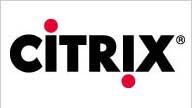– Calvin Hsu, director of product marketing with the XenDesktop product group at Citrix (www.citrix.com), says:
Desktop virtualization is inclusive of multiple architectures that isolate and insulate the OS from applications and hardware changes.
That includes:
- Server-based computing, also known as hosted shared desktops. This is based on the Microsoft Remote Desktop Services (formerly Terminal Services) platform, which is leveraged by Citrix XenApp. This is extremely mature and widely deployed, and up to 500 users can share a single typical modern server for high scalability. The XenApp server hosts the desktop and applications, and multiple users get their own “session” which they can access from a variety of endpoint devices (PCs, Macs, thin clients, smartphones, etc.) A delivery protocol enables the user to interact over a network with the desktop that is running on the server.
- VDI, or hosted virtual desktops. A server uses virtualization software to divide into multiple virtual machines, each one of which hosts a desktop OS. Just like server-based computing, a delivery protocol is used to access the desktop. The use of a virtual machine provides for greater isolation between desktop users, more personalization, and familiar desktop OS look-and-feel, at a somewhat higher cost of infrastructure (using the latest Xeon 5500 processors, XenDesktop has been tested to approximately 125-130 users per server).
- Blade PC/workstations. This is similar in that it too uses a delivery protocol, but instead of the desktop being hosted on RDS or VMs, it’s on a dedicated blade PC or workstation. This offers dedicated hardware and horsepower, which some users require – for example, engineers, CAD/CAM designers, etc.
- Streamed desktops. While the above models all rely on datacenter resources to run the desktop, this model of desktop virtualization actually uses the local endpoint processing power to run the desktop. In this case, the desktop image is managed and maintained centrally and delivered via a streaming server. When the endpoint PC is powered on, the OS is streamed over the network to the endpoint, where the executables are run on local CPU and memory, etc. This is sometimes called a “network boot” and it combines centralized management with local processing power.
- Local virtual desktops. A hypervisor on the user’s local PC enables virtual machines on that device, abstracting the desktop OS from the underlying hardware. In this case, one could have multiple desktops on a single machine, so for example, a personal VM and a locked down, corporate VM. Unlike the above virtual desktops, a network connection is not required when using this virtual desktop, enabling users to work offline.
- On-demand application delivery. Application virtualization (“sandboxing” an app to prevent DLL conflicts) and virtual application hosting (running the app on a server and using a delivery protocol to remote the interface) are a key part of the larger “desktop virtualization” picture as well – after all, what are desktops without applications? Again, the objective is to insulate the apps from each other and from the underlying OS and hardware to simplify management.



